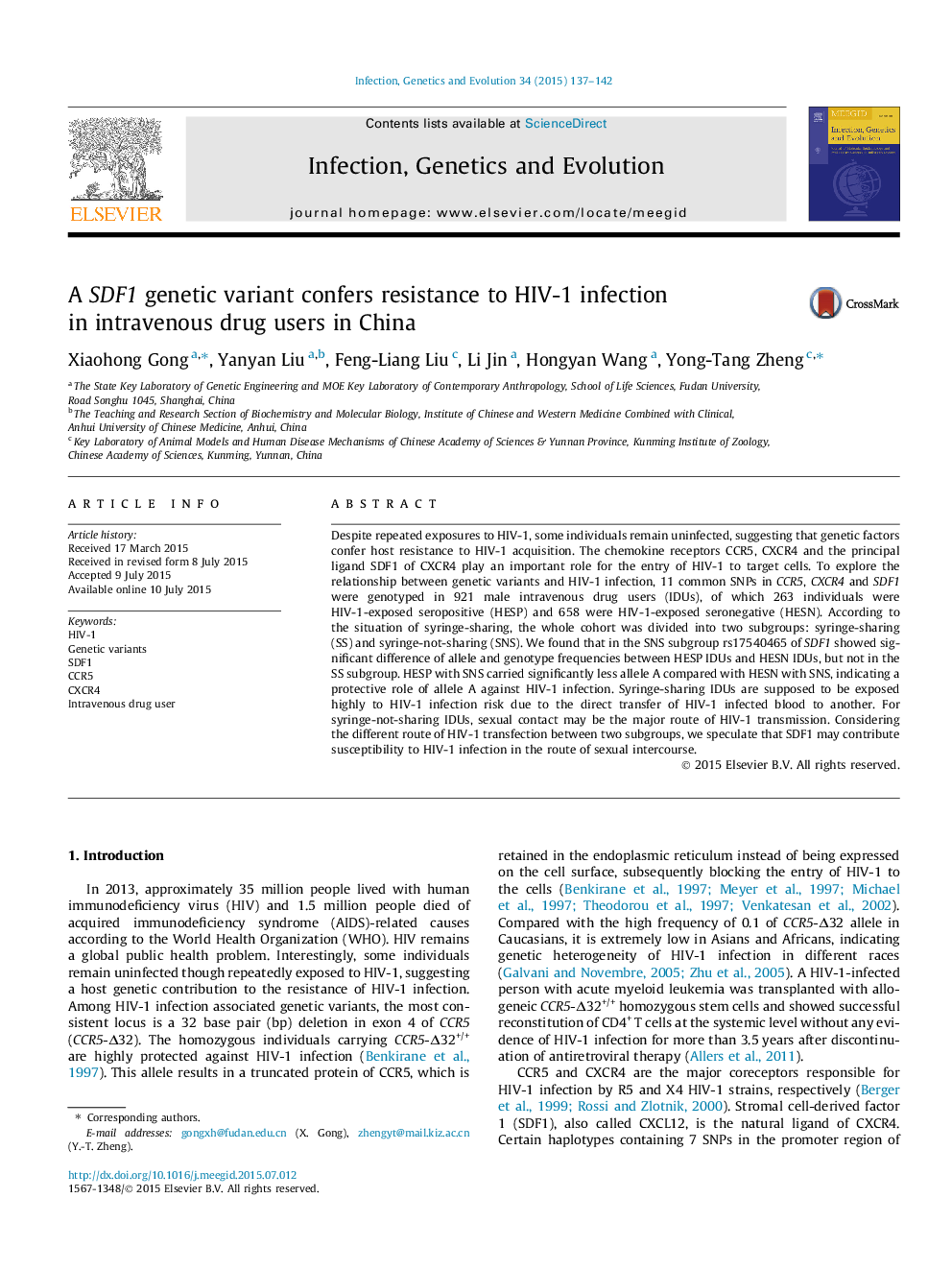| Article ID | Journal | Published Year | Pages | File Type |
|---|---|---|---|---|
| 5908972 | Infection, Genetics and Evolution | 2015 | 6 Pages |
Abstract
Despite repeated exposures to HIV-1, some individuals remain uninfected, suggesting that genetic factors confer host resistance to HIV-1 acquisition. The chemokine receptors CCR5, CXCR4 and the principal ligand SDF1 of CXCR4 play an important role for the entry of HIV-1 to target cells. To explore the relationship between genetic variants and HIV-1 infection, 11 common SNPs in CCR5, CXCR4 and SDF1 were genotyped in 921 male intravenous drug users (IDUs), of which 263 individuals were HIV-1-exposed seropositive (HESP) and 658 were HIV-1-exposed seronegative (HESN). According to the situation of syringe-sharing, the whole cohort was divided into two subgroups: syringe-sharing (SS) and syringe-not-sharing (SNS). We found that in the SNS subgroup rs17540465 of SDF1 showed significant difference of allele and genotype frequencies between HESP IDUs and HESN IDUs, but not in the SS subgroup. HESP with SNS carried significantly less allele A compared with HESN with SNS, indicating a protective role of allele A against HIV-1 infection. Syringe-sharing IDUs are supposed to be exposed highly to HIV-1 infection risk due to the direct transfer of HIV-1 infected blood to another. For syringe-not-sharing IDUs, sexual contact may be the major route of HIV-1 transmission. Considering the different route of HIV-1 transfection between two subgroups, we speculate that SDF1 may contribute susceptibility to HIV-1 infection in the route of sexual intercourse.
Related Topics
Life Sciences
Agricultural and Biological Sciences
Ecology, Evolution, Behavior and Systematics
Authors
Xiaohong Gong, Yanyan Liu, Feng-Liang Liu, Li Jin, Hongyan Wang, Yong-Tang Zheng,
